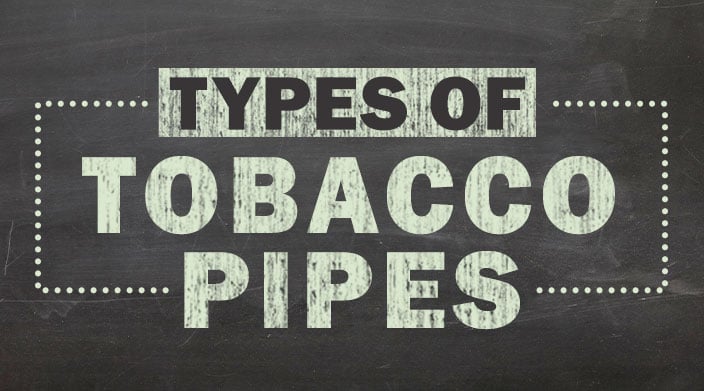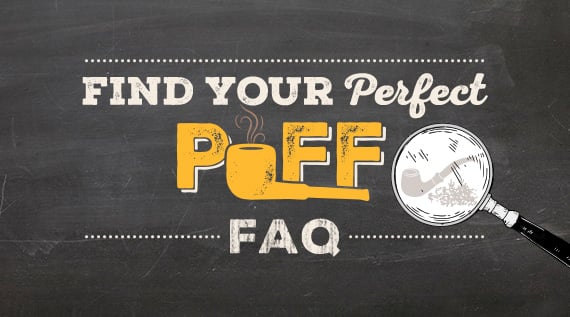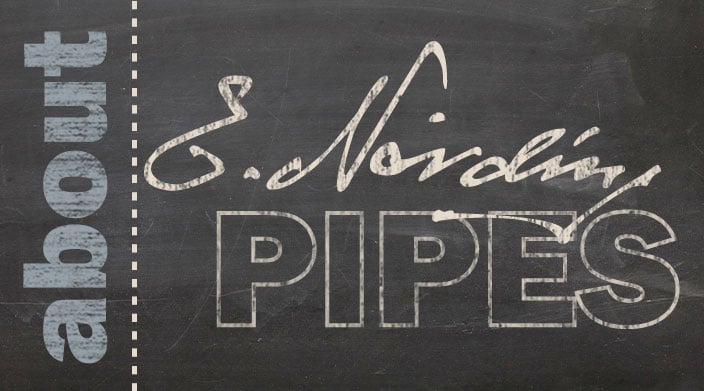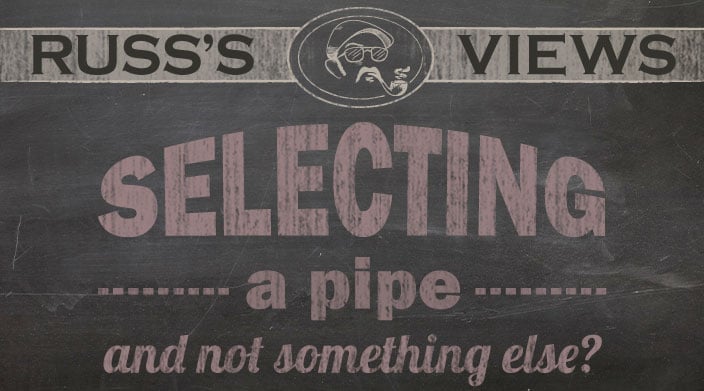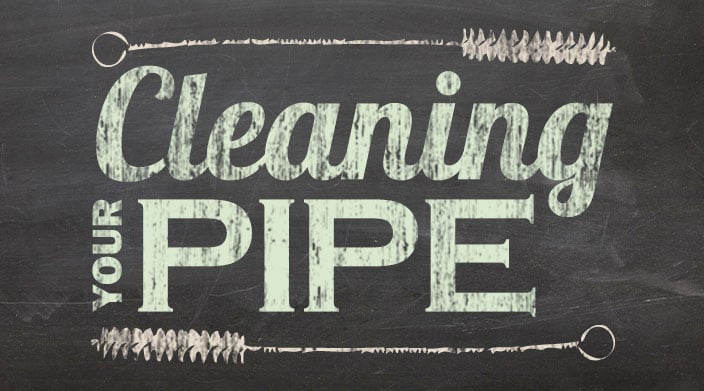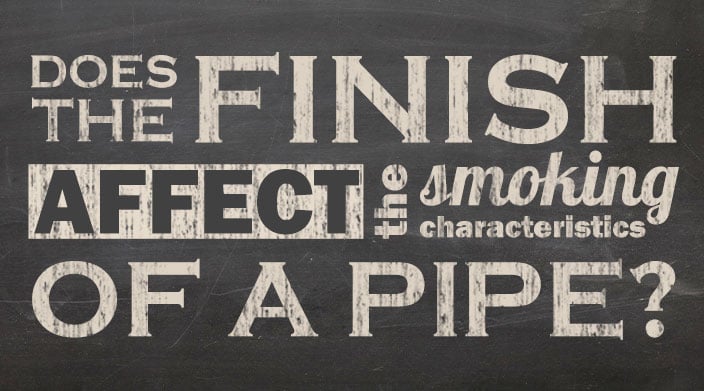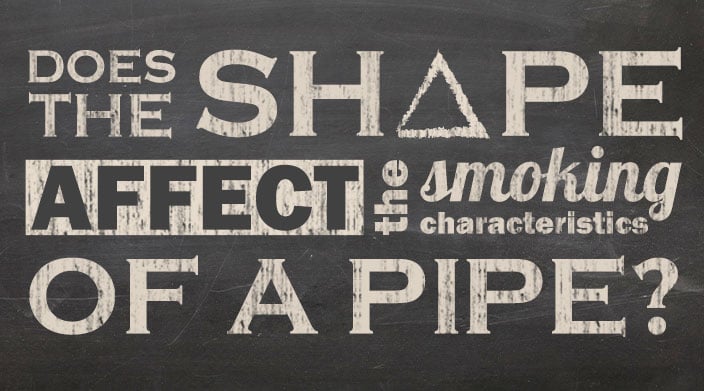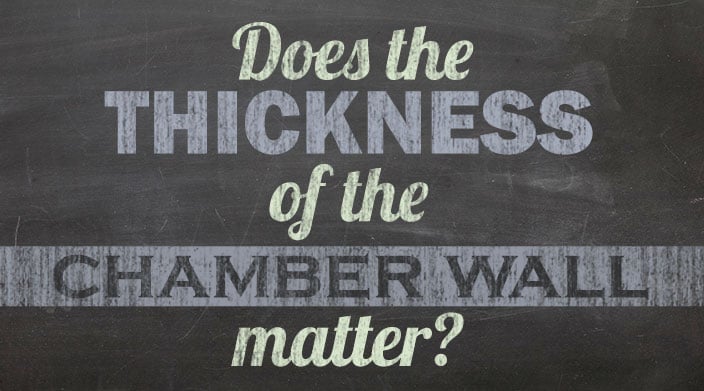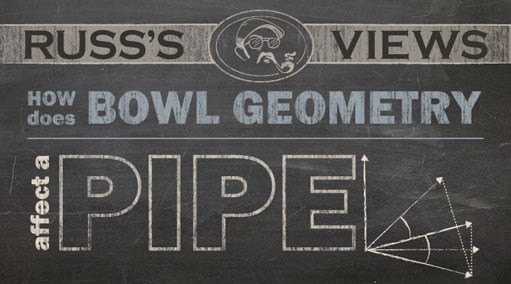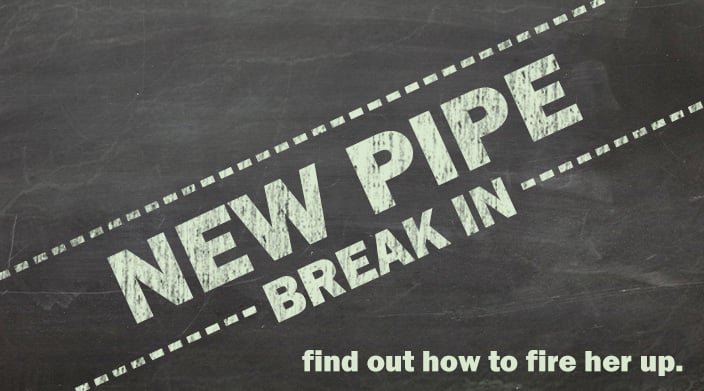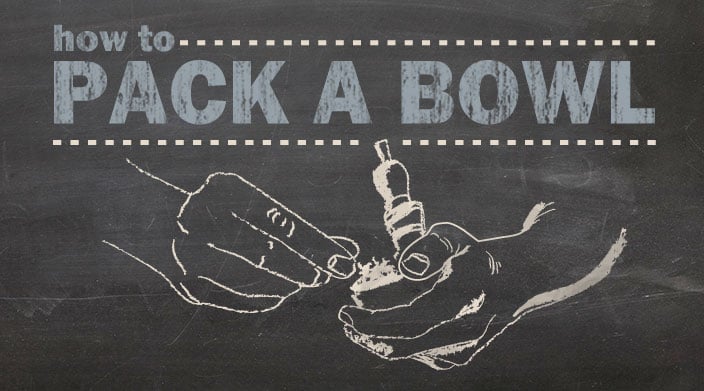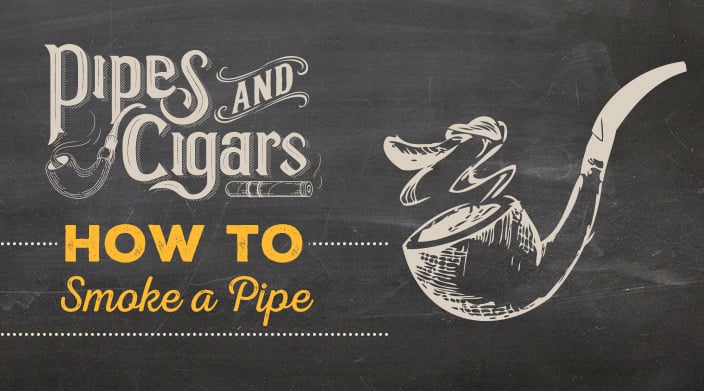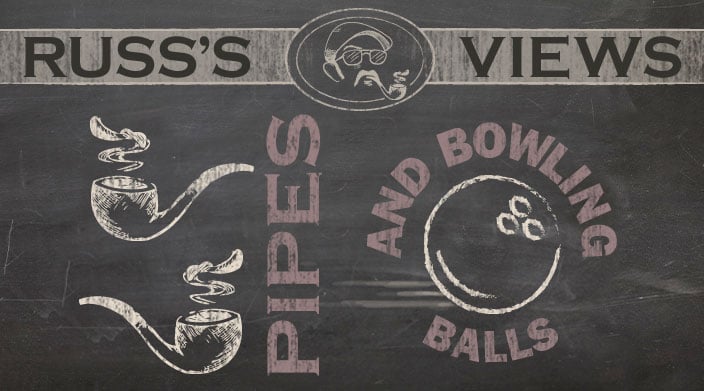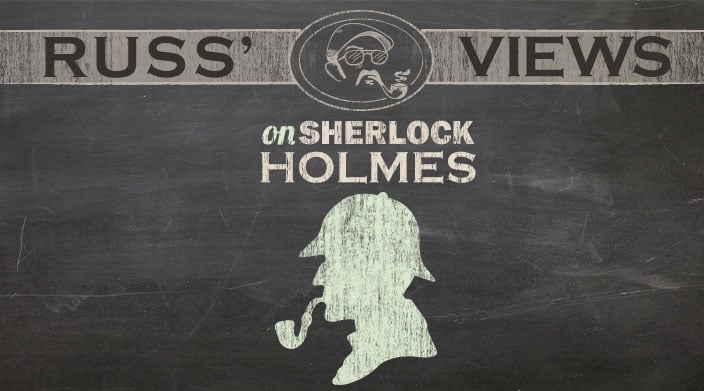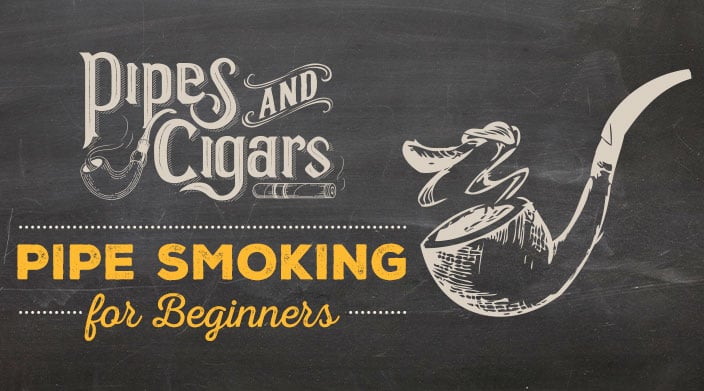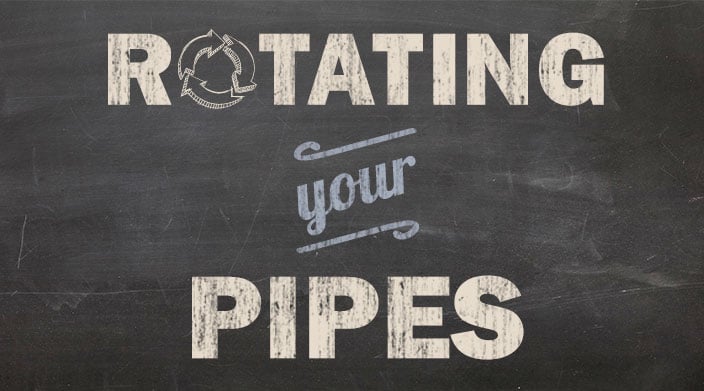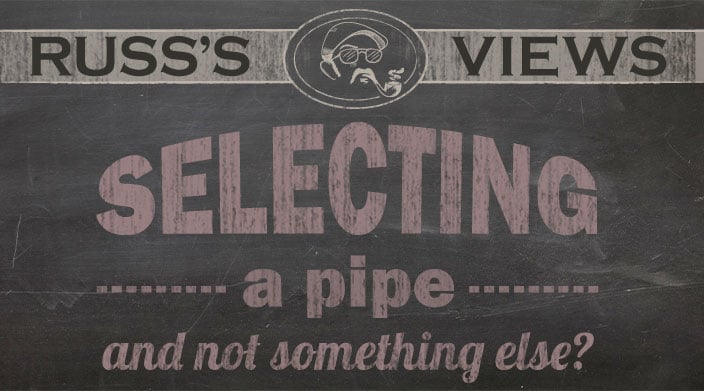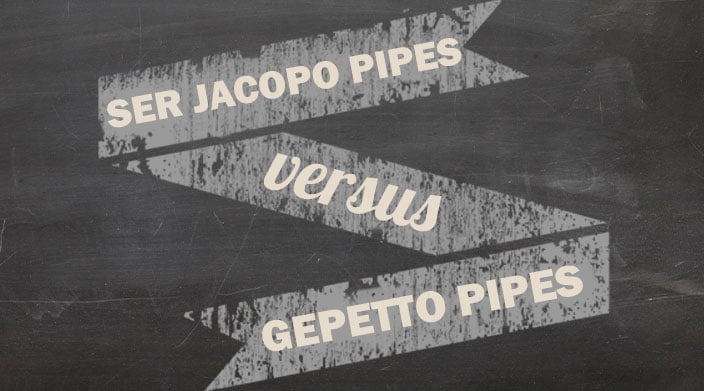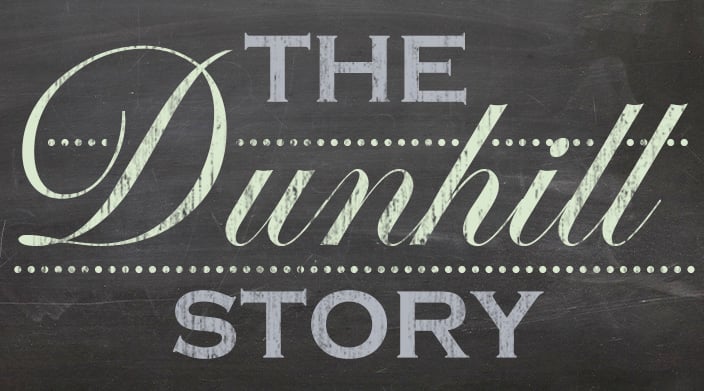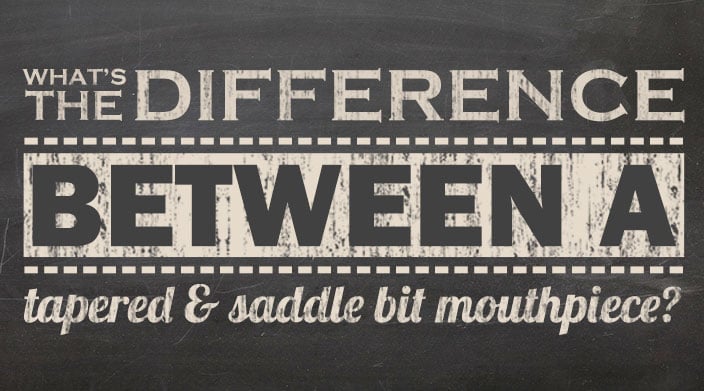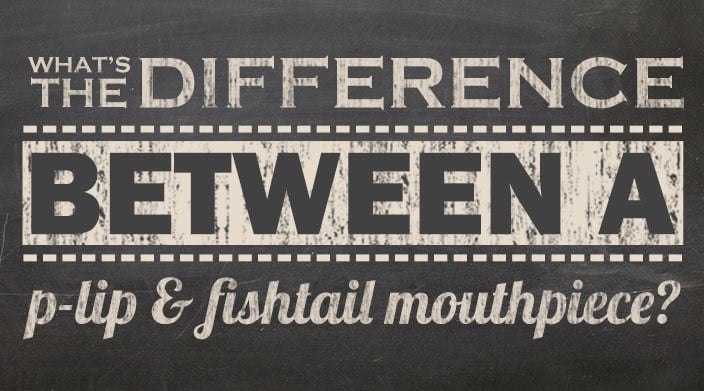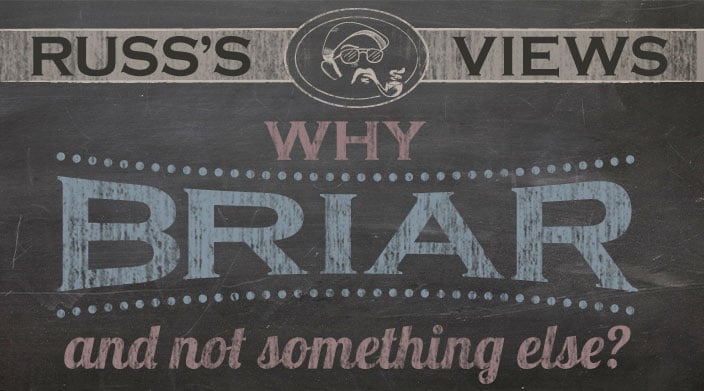One of the most daunting things about being a pipe smoker is wading your way through the dizzying assortment of different types of pipes. To further complicate things, you find yourself having to choose from varying styles, materials, stem types, trim, size, and, of course, brands. Read on so you make better sense of your options.
Tobacco Pipe Materials
The choices in materials have a major impact on the smoking qualities. Corn cobs and wood are the most common substances used to make pipes, and within the wood category, briar, fruit woods (like pear, apricot, and olive, which is actually a fruit), and maple are most popular. Other materials that you’ll see are Meerschaum, morta (also known as bog oak), and clay. Today, stems are most often made of acrylic (also called Lucite or methacrylate), vulcanite (sometimes called Ebonite or hard rubber), and wood. Although pipes can be made from other material, like metal or glass, they’re not good for smoking pipe tobacco as they don’t absorb moisture, which all of the substances detailed above do, to one degree or another.
Which to choose? Cobs and wood pipes transmit heat relatively slowly. Which makes them easier to handle while smoking, but that same property makes them more prone to damage and burnout, so it’s important to smoke more slowly and coolly to avoid problems. Meerschaum, morta, and clay are pretty much impervious to heat which makes them a better choice for people who smoke a little more aggressively and don’t mind a little higher temperature.
Tobacco Pipe Shapes
When discussing shapes, there are two main elements – the actual physical shape of the bowl, and the difference between bent and straight pipes, so let’s look at both.
There’s an incredible variety of shapes, so much so that it would take an article of exceptional length to discuss them all. In fact, a book could probably be written on the subject. Since we don’t want to overburden you with information, let’s look at the most common (and by inference) and popular ones.
Billiard – This is probably the most popular shape of all. This shape is basically a cylinder that bulges slightly on the sides. This is a good example of how shapes can easily get muddled. If the billiard has an exaggerated bulge, most people will call it an egg. In many cases, the bulge of a billiard is a little more bottom-heavy when it a bent version. This is a classic shape that is still one of the most popular. Interestingly enough, it’s one of the more difficult shapes to make properly for newer pipe makers because the balance and proportions are critically important.
Dublin – These are easy to identify. The bowl is wider at the top and they taper down to the heel of the pipe. To simplify things even further, a Volcano is the inverse of a Dublin, being wider at the heel and tapering up to a narrow bowl at the top.
Pot – These pipes are usually relative short bowls with straight sides. They also tend to be fairly wide with larger chambers.
Bulldog/Rhodesian – These bowls are identified by a narrow top which quickly widens and then tapers back down toward the heel. They often have one or two engraved lines running around the circumference which are called beads. The difference between the two is that a Bulldog has a diamond-shaped shank, while the Rhodesian comes with a round shank.
The are myriad other shapes, especially when referring to handmade pipes, but most are modifications of some of the shapes above. An example – a Calabash (shape) is really just a Dublin with a flared “cap” at the top. The bigger issue is, outside aesthetic appeal, are there any real smoking differences? If you “clench” (hold the pipe in your mouth most of the time), pretty much any shape is okay, although bent vs. straight has a bigger impact (more on this below.) If you hold the pipe often during smoking, a thick-walled shape (like the Pot) or one that gets wide at some point (Dublin, Volcano, Bulldog/Rhodesian) will work a little better, as the wide points will be cooler to the touch.
Bent vs. Straight Pipes
Some pipes have a straight shank that runs into a straight stem, while others have a shank that comes out of the bowl on an angle and the stem has a curved shape to give the pipe balance. Clenchers tend to prefer bent pipes as the physics result in less pressure on the jaw. Bent pipes also keep the bowl and the smoke out of your line of sight, to a certain degree. The main drawback of bent pipes for clenchers is that some people experience a problem with saliva making its way into the stem which then runs down toward the bowl and can cause gurgling. Straight pipes don’t have this issue to the same degree, but large straight pipes will cause jaw fatigue for those who clench.
Tobacco Pipe Stem Materials
Currently, the stem materials used most often are acrylic, vulcanite, and molded plastic. Other types include horn and wood. Here’s a look at the different types.
Acrylic – Also called Lucite or methacrylate, is a hard and slightly brittle material that’s made by mixing a resin with a catalyst making a liquid that can be molded into stem shapes or rods, Rods are used by pipemakers who craft their own stems by hand. After molding, the material gives off quite a bit of heat while it hardens. This material can be made in virtually any color imaginable, and can have swirls, or can be made to have a pearlescent appearance. It can’t be made as thin as vulcanite due to its brittle nature and is quite slick and can slip and slide against your teeth until you’ve smoked it long enough to work an impression into the stem. The upside is that it needs little maintenance as acrylic will never oxidize. It’s important to avoid alcohol while deep cleaning these stems as it can cause the material to break down.
Vulcanite – This material also has alternative names, such as Ebonite and hard rubber. This is a mixture of rubber and sulfur which is heat treated. It also can be molded into finished stems or rods. It’s usually black, but today, vulcanite can be made into a wide variety of colors. It can be made fairly thin because it’s more flexible than acrylic, and for the same reason, it’s a little more comfortable for clenching. Its major negative is that it can oxidize over time with exposure to acidity and UV light. It can be restored but may require special equipment to do so.
Molded Plastic – This is a thermoplastic that is heated and molded into stems. They’re very soft stems that can wind up with an occluded draw because it’s easy to flatten the stems with your teeth. These are used only on less expensive pipes.
Other Materials – Stems made of horn are uncommon and are almost exclusively used by artisan pipemakers. It’s a little more difficult to work with as it has a grain pattern. Wood is used for churchwardens like the ones pictured in fantasy movies, and some pipemakers have made pipes with briar stems to be unique.
Hopefully this article has helped you get a better understanding of pipes and will help you in making a smart decision on which one(s) to purchase.




